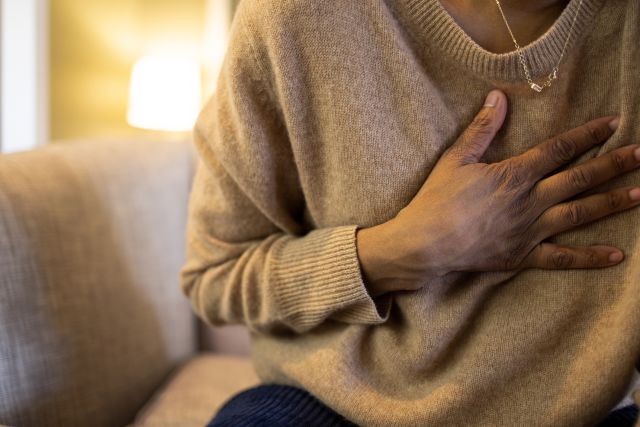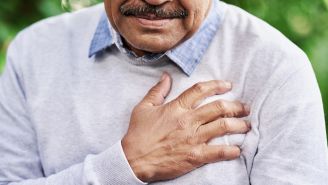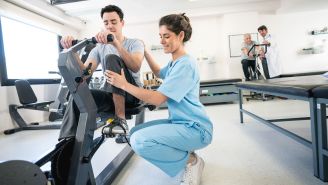Updated on March 18, 2024.
Every year, about 805,000 Americans have a heart attack, which is also known as a myocardial infarction (MI). That’s one every 40 seconds. The American Heart Association estimates that roughly 15 percent of heart attacks are fatal. Coronary artery disease (CAD) is the most common type of heart disease in the U.S. and it's also the leading cause of heart attacks, according to the Centers for Disease Control and Prevention (CDC). CAD is caused by the buildup of cholesterol deposits called plaque in the arteries that supply blood to the heart.
The faster you can get treatment, the more likely it will be successful. Here's how to recognize heart attack symptoms and get help right away.
What is a heart attack?
A heart attack occurs when one or more of the coronary arteries that surround the heart becomes blocked, cutting off all or part of the oxygen-rich blood the heart needs to function properly and causing damage to the heart muscle. Blood flow can be restricted due to the buildup of cholesterol and fat-like deposits in the artery, called plaque. Less often, a heart attack can happen when the coronary arteries spasm and block blood flow.
Heart attack warning signs
About one in five heart attacks have no symptoms. The most common symptom is chest pain lasting between 30 and 60 minutes, usually described as crushing, squeezing or burning. Sometimes people have other heart attack symptoms and not necessarily chest pain, which may include:
- Pain in the neck, jaw, either or both arms or stomach
- Light-headedness
- Shortness of breath
- Cold sweats
- Nausea or vomiting
- Indigestion, a feeling of fullness or gas
- Rapid or irregular heartbeat
- Unusual fatigue
- Anxiety
Symptoms can appear suddenly, or start mildly and come and go for hours or days. Not every heart attack will have all of these symptoms, and some of these signs might be mistaken for heartburn, pneumonia (infection of the lungs), pulmonary embolism (a blood clot in the lungs) or even a broken rib. Women may also exhibit different, more subtle heart attack symptoms, such as shortness of breath, nausea or vomiting and pain in the back of the jaw.
“Some people just have this disbelief that this can’t be happening to me, especially a younger person or a woman,” says Reginald Blaber, MD, a cardiologist with Our Lady of Lourdes Medical Center in Camden, New Jersey. “Other people don’t get classic symptoms. Sometimes it’s just a little jaw pain, or arm pain, or they just don’t feel well.” This is especially true for women and people with diabetes.
What to do if you suspect a heart attack
Call 9-1-1 right away if you think you or someone around you is having a heart attack. The operator, the emergency medical technician (EMT) or your healthcare provider may instruct you to take (or give) aspirin if it is not a risk to your health. Aspirin can help prevent a blood clot from forming, but aspirin alone is not adequate treatment for a heart attack. Always call 9-1-1 first, because trying to treat your symptoms on your own may delay potentially life-saving treatment. Do not drive yourself or someone else having a heart attack to the hospital. Wait for an ambulance; emergency medical service personnel are trained in heart emergencies and can start treatment on the way to the hospital.
“If something is wrong and you’re not sure what it is, let’s get you evaluated,” says Dr. Blaber. “Don’t feel embarrassed that you came to the hospital. We’d rather you raise a false alarm than sit at home for 12 hours while something serious is going on.”







